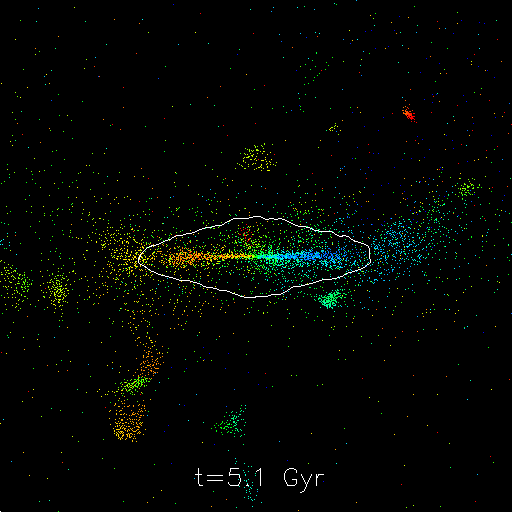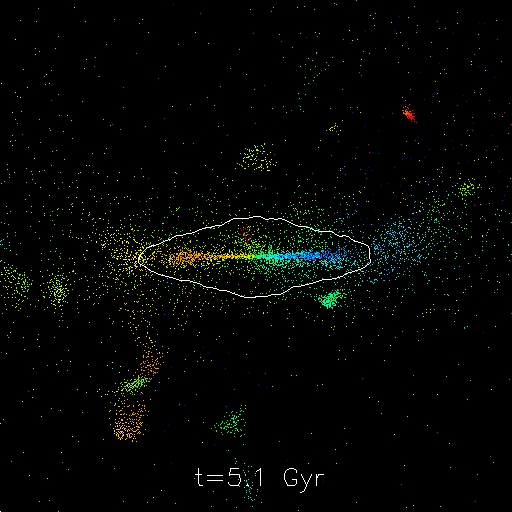Abstract: Massive early-type galaxies commonly have gas discs which are kinematically misaligned with the stellar component. These discs feel a torque from the stars, however, and the angular momentum vectors are naively expected to align within a few dynamical times. We present results on the evolution of a misaligned gas disc in a cosmological 'zoom-in' simulation of a massive early-type galaxy from the Feedback In Realistic Environments (FIRE) project. This galaxy experiences a merger at z=0.3, which, together with a strong galactic wind, removes most of the gas disc that was in place. The galaxy subsequently reforms a gas disc through accretion of cold gas, but it is initially 120 degrees misaligned with the stellar rotation axis. This misalignment persists for about 2 Gyr before the gas-star misalignment angle drops below 20 degrees. This is about 150 times longer than the dynamical time in the central kpc and varies with galactocentric radius. The time it takes for the gaseous and stellar components to align is much longer than previously thought, because the gas disc is accreting a significant amount of mass for about 1.5 Gyr after the merger, during which the angular momentum change induced by accreted gas dominates over that induced by stellar torques. Once the gas accretion rate has decreased sufficiently, the gas disc decouples from the surrounding halo gas (which remains misaligned) and realigns with the stellar component in about 6 dynamical times, independent of radius. When stellar torques dominate the evolution of the misaligned gas disc, the centre aligns faster than the outskirts, temporarily resulting in a warped disc. We discuss the observational consequences of the long survival of our misaligned gas disc and how our results can be used to calibrate merger rate estimates from observed gas misalignments.
full (AVI) movie for VLC or MPlayer (recommended):

(MP4) movie which will also play in QuickTime, but has colour
losses:

Caption: The movie shows the average line-of-sight velocity of all gas particles in a 40 kpc cubed box centred on a massive early-type galaxy from lookback time t = 5 - 0 Gyr (z = 0.5 - 0). The colour scale runs from -300 (blue) to 300 km/s (red) and is saturated at either end. The image is rotated such that the stellar angular momentum vector points in the y-direction (i.e. upwards). The shape of the stellar component is shown as white contours which connect areas of equal mass surface density. 100 simulation outputs were used to generate 500 frames (each 10 Myr) by interpolating particle data between snapshots. Please focus on the evolution of the gas disc in the central 10 kpc.
The movie starts out before the merger, with gas and stars aligned. The merger, at t = 3.4 Gyr, destroys most of the gas disc, after which the galaxy reforms a misaligned gas disc through accretion. This gas disc is seen to rotate due to continued misaligned gas accretion, which dominates the evolution until about 1.5 Gyr ago. At late times the gas disc exhibits a warp, because the stellar torques (which are stronger closer to the centre) dominate its evolution, causing the centre to realign first. At t = 0 Gyr the gas disc is almost completely aligned with the stars. The movie shows that the gas disc remains misaligned for about 2 Gyr, much longer than its dynamical time.
More information is available in the publication associated with the movie (and references therein) and the FIRE website.